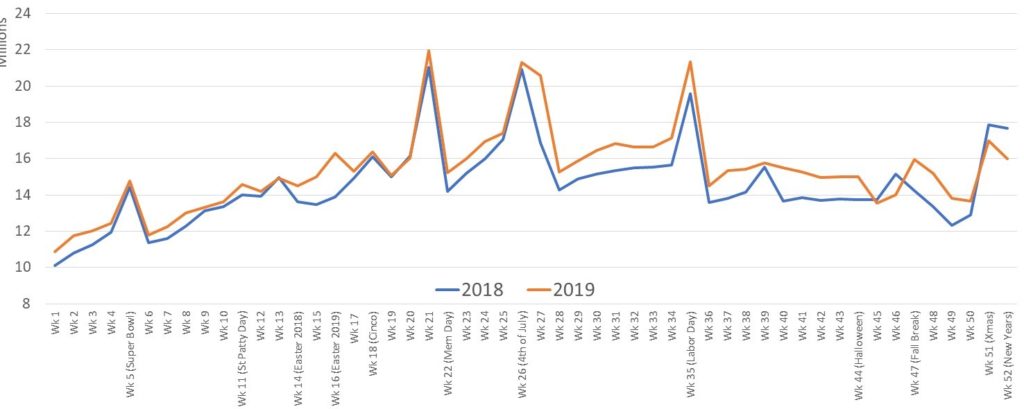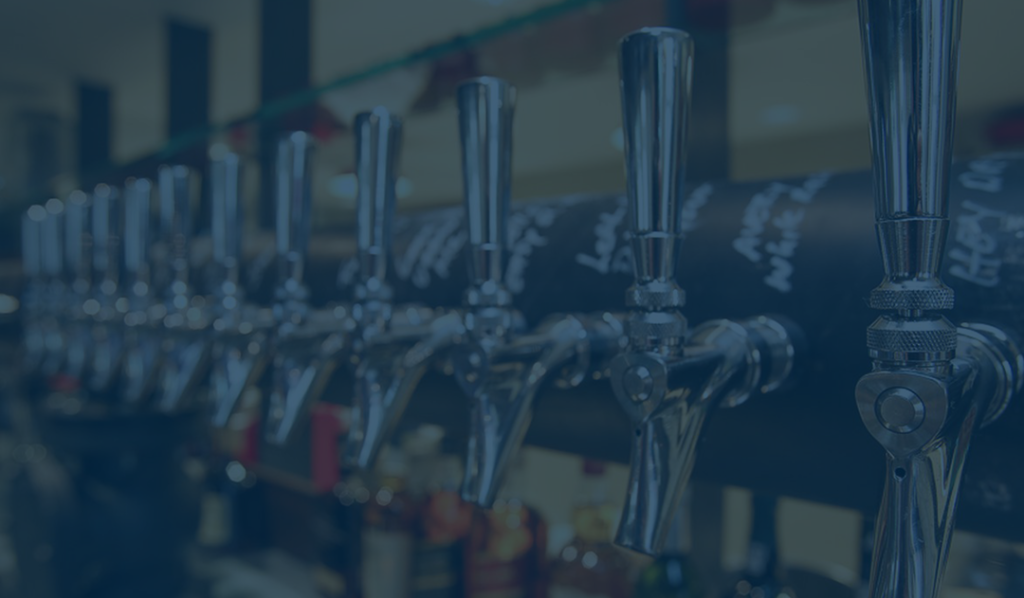How can we predict holiday success, and what else should we pay attention to when it comes to gauging overall industry success?
Every year, the beer industry awaits the few sacred days where sales skyrocket – the holidays. While some holidays bring a consistent boom every year, others seem to vary greatly. We wondered what influences the peaks and valleys throughout each year, and how we can use this data to forecast the success of future holidays. In an exclusive webinar with Fintech partner, Lester Jones, Chief Economist from the National Beer Wholesalers of America, we dug deep into 2019 beer industry sales data to investigate how last year’s sales compared to that of 2018. So, how can we predict holiday success, and what else should we pay attention to when it comes to gauging overall industry success?
To answer our questions, we looked at 2019 case volume by week sales to retailer (STR) data to see how it related to 2018. While the overall sales-spikes surrounding holidays match year to year, there were a few weeks that differed significantly. As you can see in the graph below, sales in 2019 mirrored those of 2018 closely through the first half of the year, with beer holidays like Super Bowl weekend, St. Patrick’s Day, and Cinco De Mayo bringing consistent sales in both years. Where we start to see a differentiation is right around Easter weekend 2019. From there, 2019 data remains steadily higher than 2018, up until the very end of the year with the Christmas and New Year holiday. So, what causes one year to have a better beer season than others?

Sales to Retailers Case Volume by Week | Fintech & NBWA
Our first theory revolves around the timing of the holiday. For holidays that fall on the same calendar day every year, like the Fourth of July or Halloween, it seems that the closer the day falls to a weekend, the bigger the celebrations, and the greater the STRs. In 2018, both the Fourth of July and Halloween fell on a Wednesday – hardly the biggest party day of the week. Conversely, in 2019 these days both fell on a Thursday, and sales are higher. And sales aren’t just elevated for the actual holiday, but they stay higher leading into the following week. Of course, this makes sense – it’s way easier to party into a weekend than it is to imbibe in the middle of the week.
For the holidays that move on the calendar, like Easter or Thanksgiving, the data suggests success is predicted by timing. In 2019, the STRs are about 1-2 million cases higher than those of 2018 for these days but look closely at where they fell on the calendar. In 2019, these days were later than previous years, and much closer to other holidays. So, whether consumers were lamenting fewer shopping days, or just jumping from one party season to the next, they were drinking more beer!
Another potential answer lies in something obvious – availability. 2019 was aptly deemed the year of seltzer, and that certainly had a significant impact on overall STRs for the remainder of the year. What started as the Memorial Day craze, fed right into summer BBQs, and into year-end celebrations. The seltzer category grew over 5% from 2018 to 2019, and it’s evident that the shiny new penny attracted consumers in a big way, thus, sales were higher. Another change in 2019 was an increase in the production of cans. More suppliers began manufacturing their beverages in cans, as opposed to kegs or bottles, so steady sales were possibly a result of more convenient beverages. As for the higher sales in 2019 for the fall months, again, we point to the availability of fall-related products. Fall tends to be inherently craft-oriented, and every year more brands jump on the bandwagon of creating pumpkin or Oktoberfest beer. Additionally, the celebration of Oktoberfest itself is becoming a major on-premise holiday, with festivities that last the entire month of October.
As we can see, sales data is impacted directly by the seasons and holidays, but maybe the most significant contributor is sheer availability. For 2020, take a look at the days that holidays fall on or how close they are to other celebrations. The later they occur, the more sales you may see. Of course, anticipate higher sales when seltzer brands or fall beers are involved. If someone finally produces a pumpkin-spiced hard seltzer, we might just see the highest sales ever.
Have questions about this blog or want to see how Fintech’s data can help your business? Contact us today!






